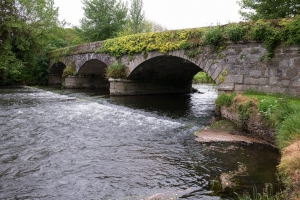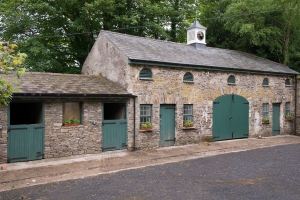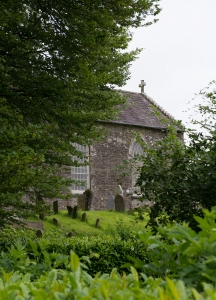A house with a story in County Cork
Every house has its tales to tell and Brideweir House in Conna, Co Cork is no exception. In the year 1822 famine had hit Ireland. In Conna the local Reverend Ludlow Tonson chaired a meeting of the parish on 29th July in favour of constructing a bridge over the River Bride.
Its purpose was “to facilitate communications in the area, and to offer employment”. A petition was sent to Dublin Castle and the rest, as they say, is history. The bridge still has pride of place today over the River Bride.
But it’s safe to say that the reverend Tonson must have had a vested interest in seeing the bridge built. It was to be just a stone’s throw from the location of his two storey over basement rectory, Brideweir House, built in 1822, the same year he helped raise the petition.
The Reverend’s house, completed for the princely sum of £923 (thanks to a gift and a grant, both of £300 from the Board of First Fruits), was situated on a glebe of seven acres and boasted a fine coach house and stables, all still in existence today.
Tonson lived there for 17 years until he was ordained Lord Bishop of Killaloe in 1839.
But building bridges wasn’t the only thing that interested the Reverend Tonson. Born in 1784, he was the seventh son of the first Lord Riversdale and was ordained deacon and then priest in 1810. He was vicar at Marshalstown until 1814, when he took up his appointment at Aghern and Britway.
During his time there he was instrumental in pioneering agricultural improvements in the area, along with Spotswood Bowles Esq., who lived at the nearby Aghern House. Inheriting the title of Baron Riversdale from his brother in 1848, Tonson’s achievements were on a local and national scale.
Brideweir History – the Rectory after Tonson
Following Tonsons ascension to Bishop in 1839, the glebe-house became home to the new vicar of Aghern and Britway, George Bruce Nason. In July 1899, the last rector to reside in the glebe-house died and it passed into private ownership.
The new resident at Brideweir was an Englishman named Clement Broad, who was involved in the manufacture of bricks. Broad lived at the former glebe-house for five years before moving to the old school-house to the south of Brideweir House. He was apparently a very keen gardener and won many prizes at shows in England.
In 1905, Doctor Eaton William Waters of Tramore purchased the old rectory and named the residence Brideweir. Waters was Demonstrator of Anatomy at Queens College Galway and engaged in private practice at Huddersfield and Bolton before he came to Aghern.
The Waters family has a rich history and the family is firmly rooted in the Cork area. Theobald Waters came to Ireland circa 1179 and was the nephew of Thomas Beckett and the brother of Hubert, Bishop of Salisbury, who later became Archbishop of Canterbury.
Seven mayors in Cork
The Waters family gave seven Mayors to Cork from 1310 to 1585 and had considerable estates in County Cork for nearly 200 years until the Williamite War. In 1918 Waters married Annie Martin Orr of Bengal, India and they had six children together.
Waters also installed the cast iron water-wheel to the south-east of the house, which he used to generate his own electricity. Such was the power generated by the Weir that on occasion when the river ran so fast that the lights flickered.This meant that Brideweir House was one of the first houses in Cork to be electrified. (Rural electrification didn’t start rolling out in Ireland until 1946 a year after Waters died in 1945). He left Brideweir to his son Adrian who was the last of the family to reside there.
Adrian Waters sold the former glebe-house to Doctor Kevin McCarthy and his wife Eileen in 1954. McCarthy set up a thriving medical practice and was very involved in the local hunt club, keeping horses for his family to ride with the hounds.
In 1963 Leslie and Joan Graham purchased Brideweir, selling it on again in 1975 to Mr O’Donovan and Theresa Arnold who lived there until 1980 when they were succeeded as owners of Brideweir by Edward and Louise Hallinan.
Brideweir House in the 21st century
From the time of its construction in the mid-nineteenth century, Brideweir House has played an important part in the history of Aghern and the local area. From the bullet holes in the boundary wall of the house, (reportedly shot by the Royal Irish Constabulary) to the original post box built still in existence beside the gate, there are lots of clues to the past of this fine standing country home. In fact it is considered so important that it was conferred with protected status and placed on the Record of Protected Structures.
The previous owners would be pleased to know that Brideweir still serves as a family home to current owners, Ronan and Philomena Fox who purchased it in 2004. Now they are sharing this stunning house with couples looking for the perfect, private wedding venue. To capture a piece of Irish history get in touch and see for yourself. And if you happen to be there on Christmas Eve, don’t miss the amazing carol service in the original old church of the Reverend Tonson, just outside the grounds.



